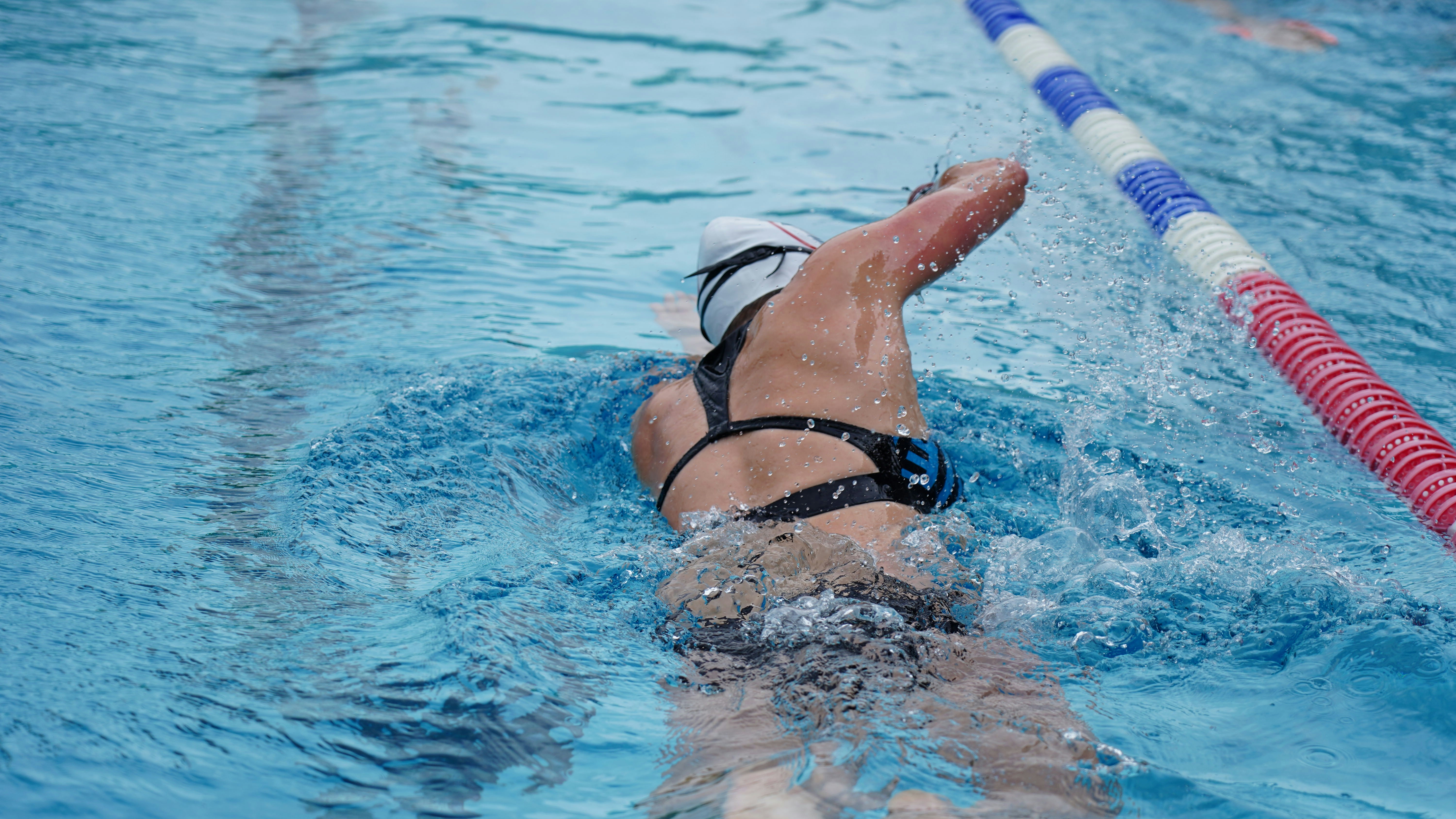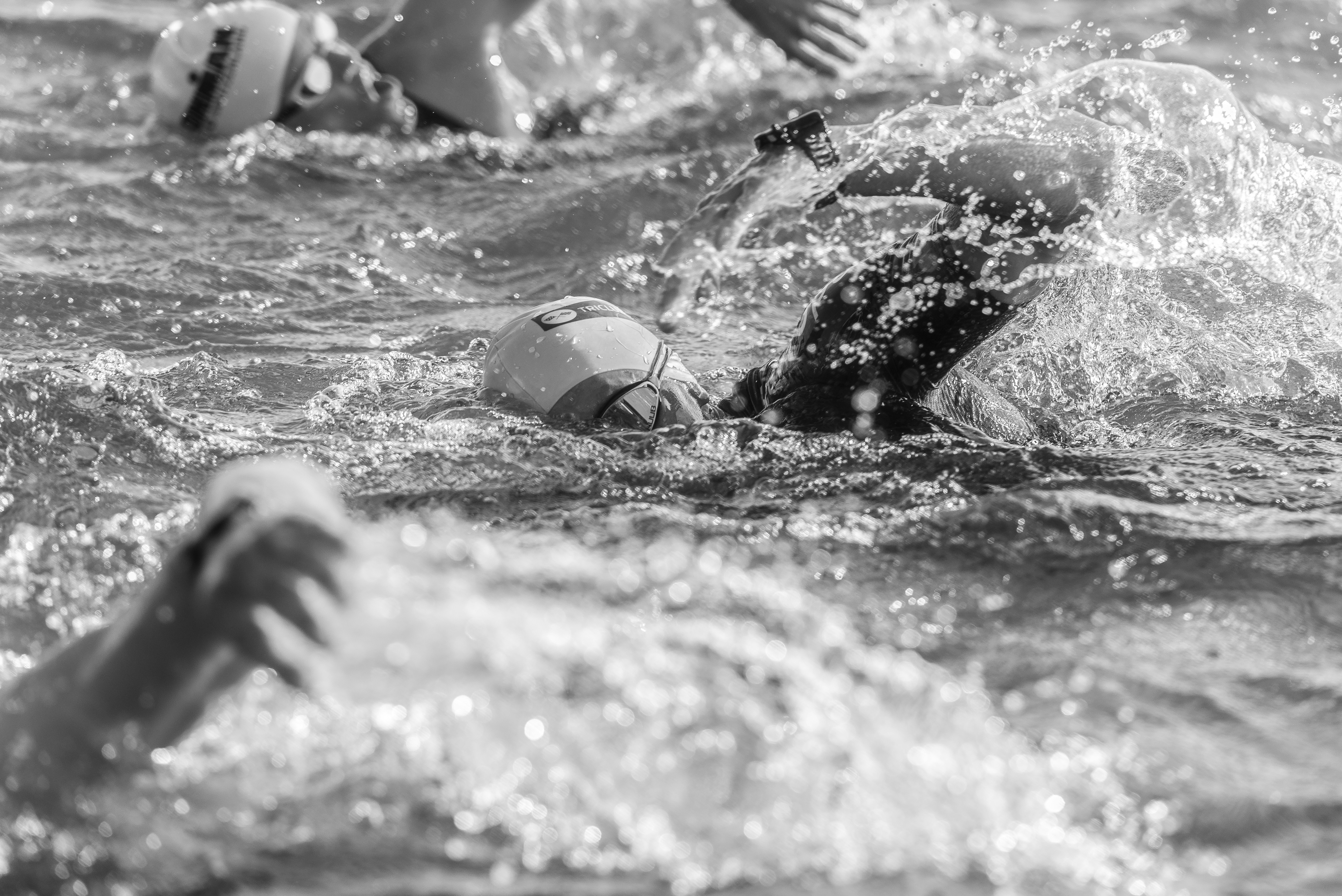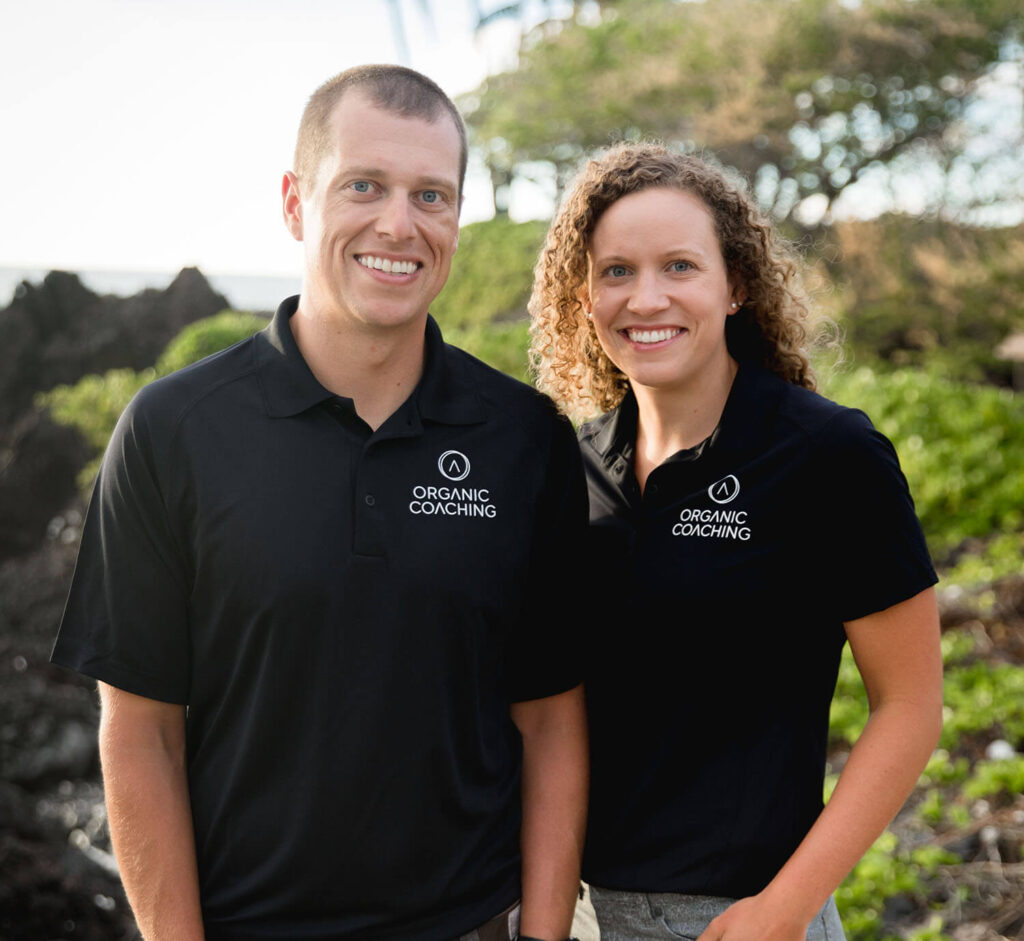
Here are our top 8 swim drills for triathletes. These drills are designed to help you improve your form and technique, which will lead to faster times and more efficient swimming. Whether you are a coached or self-taught swimmer, it’s important to “go back to the basics” and focus on proper technique in training. Giving extra attention to proper form will help correct stroke errors, improve efficiency in the water, and minimize injury in training. These swim drills for triathletes are a great way to build a foundation for your swimming, and they can help you develop a more powerful and efficient stroke.
With freestyle (aka front crawl) being the most common stroke used in triathlon, here are 8 swim drills for you to incorporate into your daily training as a triathlete.
This drill helps to correct poor body alignment and position. It helps teach you how to maintain a low head position in the water. How to press down with your upper body, and to bring your hips and legs to the surface of the water.
To do the drill, kick with your face down, chin pointed at the bottom of the pool and your hands held closely to your side. These are the key setup points. (1) Position your head so that the water breaks on top of your head, not on your forehead. (2) Lean on your chest. (3) Raise your hips up to the surface of the water. When you need to take a breath, lift your head and breath to the front. As you start, fins can be helpful to use with this drill.
Our first swim drill for triathletes is the 6-kick switch drill. Many beginner triathletes maintain a very flat position in the water while swimming, which places significant strain on the shoulders and increases drag. This drill allows the body to rotate quickly from side to side on its axis and helps avoid spending an excessive amount of time in the prone position.
To perform the 6-kick switch drill, push off the wall in a streamlined position and take one stroke, rotating to your side for 6 kicks. One arm will rest above your head in the water and the other arm at your side (at the water’s surface) while kicking.
As you perform the 6-kick switch drill, make sure your head, hands, hips, and heels (4H’s) are in a straight line. This will help you maintain a small and steady kick, which can be challenging for beginner triathletes. If you are having difficulty keeping your feet and hips up while rotating on your side, you can use fins to assist as you work on body positioning in the water.
The 3-Stroke Glide drill is a progression from the 6-Kick Switch drill. It’s easy to regress back to “flat swimming” when you’re tired. 3-Stroke Glide allows you to rotate your body more effectively in the water, creating a more streamlined body position and increasing efficiency and speed with your strokes.
With a 3-stroke glide, push off in a streamlined position and take your first stroke, rotating to your side while aligning your 4H’s, and kicking for 6 kicks. Then take 3 long, smooth strokes before rotating to your other side for 6 kicks. Repeat this for the duration of the lap.
The Fingertip Drag drill is a great way to improve your technique and strengthen your pull-through. It helps you maintain good body position, proper rotation, and balance during the recovery phase of your stroke. It also lets you practice high elbow recovery, which sets up proper hand placement for the entry phase and leads to a stronger pull-through under the water.
To do the drill, swim freestyle with a focus on high elbows. With each stroke, lift your elbow and drag your fingertips across the surface of the water as you move forward. Maintain a good rotation as you initiate your catch and pull-through.

This drill is key for novice triathletes because it helps you slow down your strokes, focus on hand entry, and assist with proper body position and balance in the water. It also allows you to glide more efficiently while taking fewer strokes per length and improving distance per stroke (DPS).
Swim freestyle, one stroke at a time, until the arm in the recovery phase “catches up” to the arm resting out front in the streamlined position. Keep your shoulder up near your head with your elbow high before entering the water. Once entering the water, place your hand next to the lead arm, shoulder width apart, as if you are riding a bicycle. Then initiate the next stroke.
Take your time with this drill. Focus on long, smooth strokes while maintaining a good feel for the water as you glide through each stroke. Utilize a small steady kick throughout. You may hold a kickboard out in front of you for assistance.
Focus on maintaining your body position while initiating a one arm pull.
Stroke with one arm while the other arm is outstretched in front of you. Rotate your hips and shoulders as you focus on the entry and catch phase of your stroke. Breathe on the same side as your stroking arm. Swim a full lap with one arm before switching to the other.
Once you’ve mastered the One Arm Recovery drill with one arm resting above your head, try placing your resting arm at your side while the other arm strokes. This is more challenging and creates instability, which allows you to focus on better balance and rotation in the water.
This swim drill is important to practice for when you become tired during a race and begin to shorten (or tighten) your rotation. When you’re tired, you naturally tend to tighten up and shorten your rotation. This drill helps you maintain your rotation even when you’re tired.
This drill teaches you how to improve your catch by grabbing the water with both your hand and forearm. By closing your fists and reducing the surface area of your hand, you reduce your “feel” for the water and force yourself to focus on catching and pulling through the water with your forearms. Once you open your hands and swim normally, you will instantly feel a stronger catch, pull, and follow-through in your stroke.
This drill requires you to swim freestyle with high elbows and closed fists while maintaining a steady kick. By closing your fists, you reduce the surface area of your hand, which reduces your “feel” for the water and forces you to focus on catching and pulling through the water with your forearms. Once you open your hands and swim normally, you will instantly feel a stronger catch, pull, and follow-through in your stroke.
Remember to maintain high elbows with this drill. You may also use tennis balls instead of fists if preferred.
Wearing fins, kick in place in the vertical position. With your head above the water, the rest of your body directly below you. Focus on having a small, powerful kick as opposed to a wide, spreadout kick. The key with this drill is to use your gluteus Maximus and hamstring to generate power while your feet stay relatively close together.
Start doing this drill with your hands down by your side. As your kick gets stronger, you can add a challenge by clasping your hands behind your head.
All of these swim drills for triathletes are great to incorporate during warm-up and can even be added to your warm-down routine or within the recovery phase of sets.
When performed slowly and intentionally, swim drills serve as good reminders for triathletes about proper technique and set the tone for a successful workout. Mastering these skill sets will allow you to strive for better swim efficiency and increased speed in the water.
READ MORE: 10 WAY TO IMPROVE YOUR SWIM

Carly and Tyler Guggemos built Organic Coaching in 2014 with a simple philosophy that works. The idea is to take what you have and grow it to get faster, fitter and stronger. And to do it with the time you have – not the time you wish you had.

For athletes who are ready to take their training to the next level while still thriving and succeeding in their professional and family life.
Copyright © 2024 Organic Coaching LLC